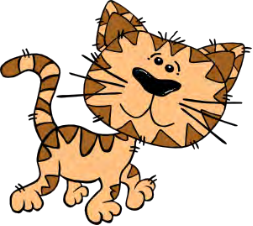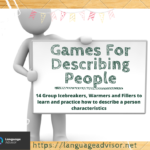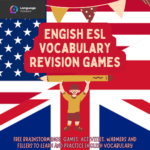8 Describing Games for ESL English. Descriptive Delights: 8 Engaging Games for ESL English Learners
8 Describing Games for ESL English

Welcome to our blog post where we’re diving deep into the world of descriptive language! As ESL English educators, we understand the importance of developing strong descriptive skills in our students. That’s why we’ve curated a collection of eight exciting games designed to enhance descriptive language proficiency in ESL learners. From vivid storytelling to detailed descriptions of objects and scenes, these games offer a fun and interactive way for students to expand their vocabulary and express themselves with confidence. Join us as we explore each game and discover how they can transform your ESL classroom into a hub of creativity and linguistic exploration.
Let’s embark on a journey of descriptive delights together!
8 Describing Games for ESL English

Describing Dodgeball
Here is a fun ball game that can be used to help students practice describing physical appearance, clothing, or personality. This describing game is a variation of dodgeball. It works particularly well in large classrooms where there is room to run around.

- Age/Level: Any
- Time: 20 minutes
- Players: Individual
- Preparation: A soft ball
- Aim: To listen and match descriptions of people
Procedure
Before you begin the game, you will need a soft ball.
Clear a space so there is room to run from one side of the classroom to the other. Have all the students stand at one end of the room.
Choose one student to be the ball thrower and have that student stand to the side with the ball.
You start describing one student, e.g. “This student is wearing white trainers. This student has short brown hair and blue eyes. This student is hard-working,” etc. Alternatively, you could choose a student to do the describing.
Depending on the language focus, the teacher/student describes physical appearance, clothing, personality, etc.
The students at the end of the classroom listen to the description. When they figure out who is being described, that student runs to the other side of the room.
The ball thrower then tries to hit the student as he/she runs. If the student is hit, he/she becomes the new ball thrower.
You could also use this game to describe other things, such as furniture, food, famous people, etc., by giving each student a picture to hold up.

Details
This describing game is a wonderful way to incorporate media into your lesson. You will need access to a VCD/DVD player or the Internet for this game. Choose a 5 to 10 minute clip from a movie, TV program, or music video. The clip should contain numerous things and have a diverse backdrop.

- Age/Level: Elementary and above
- Time: 25 minutes
- Players: Small teams
- Preparation: 5-10 minute video clip
- Aim: To write descriptions of what you see in a video
Procedure
Divide the students into small teams. Provide each team with a piece of paper and a pen. Explain to the students that they will watch a video and need to write down descriptions based on what they see. Let them know that they will earn one point for every adjective + noun combination. Encourage students to write complete sentences, as these will earn five points each. For example, “Red car” = 1 point, “The bright red sports car is traveling at high speed.” = 5 points. After watching the video, review each team’s answers and tally up the points. The team with the highest number of points wins. This game can also be adapted to practice verbs, nouns, and other language elements.

Felix the Cat
Here is a very simple game for adjectives of appearance and personality.

- Age/Level: Young learners
- Time: 20 minutes
- Players: Individual
- Preparation: None
- Aim: To think of adjectives beginning with a certain letter
Procedure
Draw or copy a picture of a cat on the board. Above the picture, write ‘Felix the Cat‘. Then write on the board: Felix the cat is an awesome cat.
Next, write the letters of the alphabet (b, c, d, e, f, etc.) down the board. Tell the students that they will take it in turns to think of a new adjective to describe Felix using the letters on the board.
Students then take it in turns to come up with a new sentence to describe Felix. Examples: Student A: Felix the cat is a bad cat. Student B: Felix the cat is a crazy cat. As each student says a new adjective, you write it on the board. You could also have the students write the sentences

Hot Seats
This is one of the most popular describing games for teachers to play with their students. It is an excellent game for teaching or revising any vocabulary.

- Age/Level: Elementary and above
- Time: 20 minutes
- Players: 2 teams
- Preparation: A list of revision words
- Aim: To describe words to a classmate
Procedure
Begin by separating the class into two teams (Team A and Team B).
Place two chairs facing away from the board at the front of the class.
Get one player from each team to come and sit on one of the chairs, facing their team and having their back to the board.
These chairs are the ‘Hot Seats‘.
Write a revision word from your list clearly on the board.
The team members describe the word to their player in the hot seat, using definitions, synonyms, adjectives, etc.
The two players listen to their teammates and try to guess the word.
The first player to say the word wins a point for their team and gets to change places with someone else from their team. Then, the game begins again.
The other team has to keep the same player in the hot seat until he/she is first to answer correctly

Swat
This is an active describing game for ESL students.

- Age/Level: Any
- Time: 20 minutes
- Players: 2 teams
- Preparation: 2 fly swatters and a list of revision words
- Aim: To listen to a description and match it with a word
Procedure
Before you begin, you will need two fly swatters (or similar objects) and a list of words you wish to review.
Write all the words from your list randomly on the board.
Then, move any chairs or desks away from the board, so the students can run up to the board easily.
Separate the class into two teams (A and B) and give each team member a number. Call out a number. The two students with that number come up to play first.
Give the two students a fly swatter each.
Then, give a description of one of the words on the board, e.g. It’s something you sit on, what is it?
The two students run to the board to find the word ‘chair’.
The first student to swat the correct word wins a point for their team. Then, another number is called out and so on.

Teammates
In this ESL describing game, students use adjectives to describe their teammates to the class.

- Age/Level: Elementary and above
- Time: 25 minutes
- Players: Teams of 4 to 5
- Preparation: None
- Aim: To write a description of a classmate’s appearance and personality
Procedure
Give each team a piece of paper and pen.
Tell the students to secretly choose a student from their team to describe. Ask them to describe their chosen teammate by writing down adjectives on their paper.
Explain that they should start by describing the student’s physical appearance and then they write about the student’s personality.
When everyone has finished, ask the teams to come to the front of the class one by one.
The teams read out their descriptions and the other teams try to guess who they are describing.
Teams win points for correct guesses.
When all the teams have described their teammate, put the students into new teams and play another round.
You can also ask them to write about other information, e.g. likes and dislikes, favourite colours, etc.

Ten Words
This ESL describing game motivates students to use vocabulary they have learnt in class.

- Age/Level: Elementary and above
- Time: 30 minutes
- Players: 2 teams
- Preparation: Small slips of paper
- Aim: To describe recently studied words
Procedure
Give each student ten small slips of paper.
Ask the students to write down one word on each slip of paper. Tell the students that the words must be vocabulary they have learnt recently in class.
When they have finished writing, collect the word slips and put all the slips into a bag or box. Divide the students into two teams.
One student from each team comes up to the front. You pick a word and show it to the two students.
The two students then race to describe the word to their teammates.
They can use any means to explain the word, e.g. synonyms, adjectives, actions, drawings, etc.
The first team to correctly guess the word wins a point. Then, the next two students come up and so on.

8 Describing Games for ESL English
Describing Animals Crossword

8 Describing Games for ESL English. Here are some other English ESL resources












